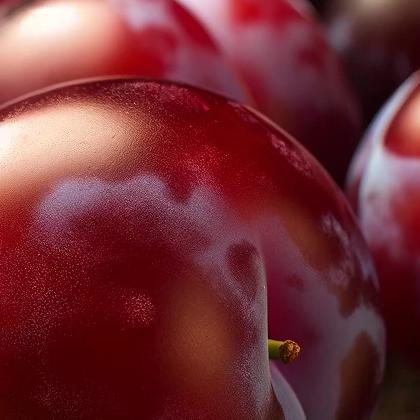Plums

A plum is a drupe fruit of the subgenus Prunus of the genus Prunus. The subgenus is distinguished from other subgenera (peaches, cherries, bird cherries, etc.) in the shoots having a terminal bud and solitary side buds (not clustered), the flowers in groups of one to five together on short stems, and the fruit having a groove running down one side and a smooth stone (or pit).Mature plum fruit may have a dusty-white coating that gives them a glaucous appearance. This is an epicuticular wax coating and is known as "wax bloom". Dried plum fruits are called dried plums or prunes, although prunes are a distinct type of plum, and may have antedated the fruits now commonly known as plums.[citation needed]Plums belong to the Prunus genus of plants and are relatives of the peach, nectarine and almond. They are all considered "drupes," fruits that have a hard stone pit surrounding their seeds.
Plums Pairs With:

Plums Properties:
| Food Property | Type | Description |
|---|---|---|
| Flavor Profile | Sweet | Plums are known for their natural sweetness with a slightly tart undertone. |
| Sour | Plums can also have a sour or tangy flavor, especially when not fully ripe. | |
| Texture | Firmness | Plums have a firm texture when ripe, but can become softer as they ripen further. |
| Moisture | Plums have a high moisture content, making them juicy to bite into. | |
| Nutritional Value | Micronutrients | Plums are rich in micronutrients such as vitamin C, vitamin K, and potassium. |
| Fiber | Plums are a good source of dietary fiber, which can aid in digestion and promote gut health. | |
| Color | Natural Pigments | Plums have a deep purple skin and a yellow or red flesh, thanks to natural pigments like anthocyanins. |
| Aroma | Volatile Compounds | Plums have a sweet and floral aroma, attributed to the presence of volatile compounds in the fruit. |
Food Pairing App - Version 1.2.0
